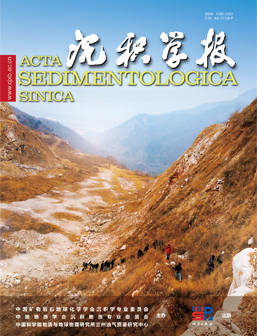Diagenetic sequence, reservoir-forming and hydrocarbon accumulation effect of paleokarst reservoirs in the Sinian Dengying Formation, Central Sichuan Basin
doi: 10.14027/j.issn.1000-0550.2024.098
- Received Date: 2023-10-31
- Available Online: 2024-09-13
-
Key words:
- U-Pb isotope dating /
- paleokarst reservoirs /
- Sinian system /
- Diagenetic sequence /
- Dengying Formation /
- Central Sichuan Basin
Abstract: The paleokarst reservoirs of the Sinian Dengying Formation in the Central Sichuan Basin are key targets for marine natural gas exploration in China, with characteristics such as early formation period, long diagenetic alteration, and strong heterogeneity. By conducting identification of diagenetic mineral sequences, U-Pb isotope dating, and laser in-situ element content testing on the paleokarst reservoirs of the Dengying Formation, combined with core physical property testing and image software identification, the reservoirs in the Dengying Formation 2nd and 4th Member can be divided into two types: fracture-vug type and pore-vug type. Nine stages of diagenesis-hydrocarbon accumulation events were identified, and the diagenetic fluids can be divided into three types: seawater, modified seawater, and hydrothermal fluids. The results of diagenetic sequences and laser in-situ U-Pb age analysis indicate that multi-stage diagenetic events, including three stages of seawater cementation and three stages of hydrothermal activity, have destructive effects on reservoir physical properties. The recovery results of paleo-porosity during the diagenetic evolution indicate that the fracture-vug type reservoirs in the Deng Formation 2nd member always have the ability to migrate and accumulate during the formation stage of paleo-oil reservoirs, the stage of crude oil cracking into gas, and the stage of gas reservoir adjustment, while the pore-vug type reservoirs have the ability to migrate and accumulate in the latter two stages. The fracture-vug reservoirs in the Deng Formation 4th member have migration and accumulation capabilities in all three key stages of hydrocarbon accumulation.
| Citation: | Diagenetic sequence, reservoir-forming and hydrocarbon accumulation effect of paleokarst reservoirs in the Sinian Dengying Formation, Central Sichuan Basin[J]. Acta Sedimentologica Sinica. doi: 10.14027/j.issn.1000-0550.2024.098 |






 DownLoad:
DownLoad: